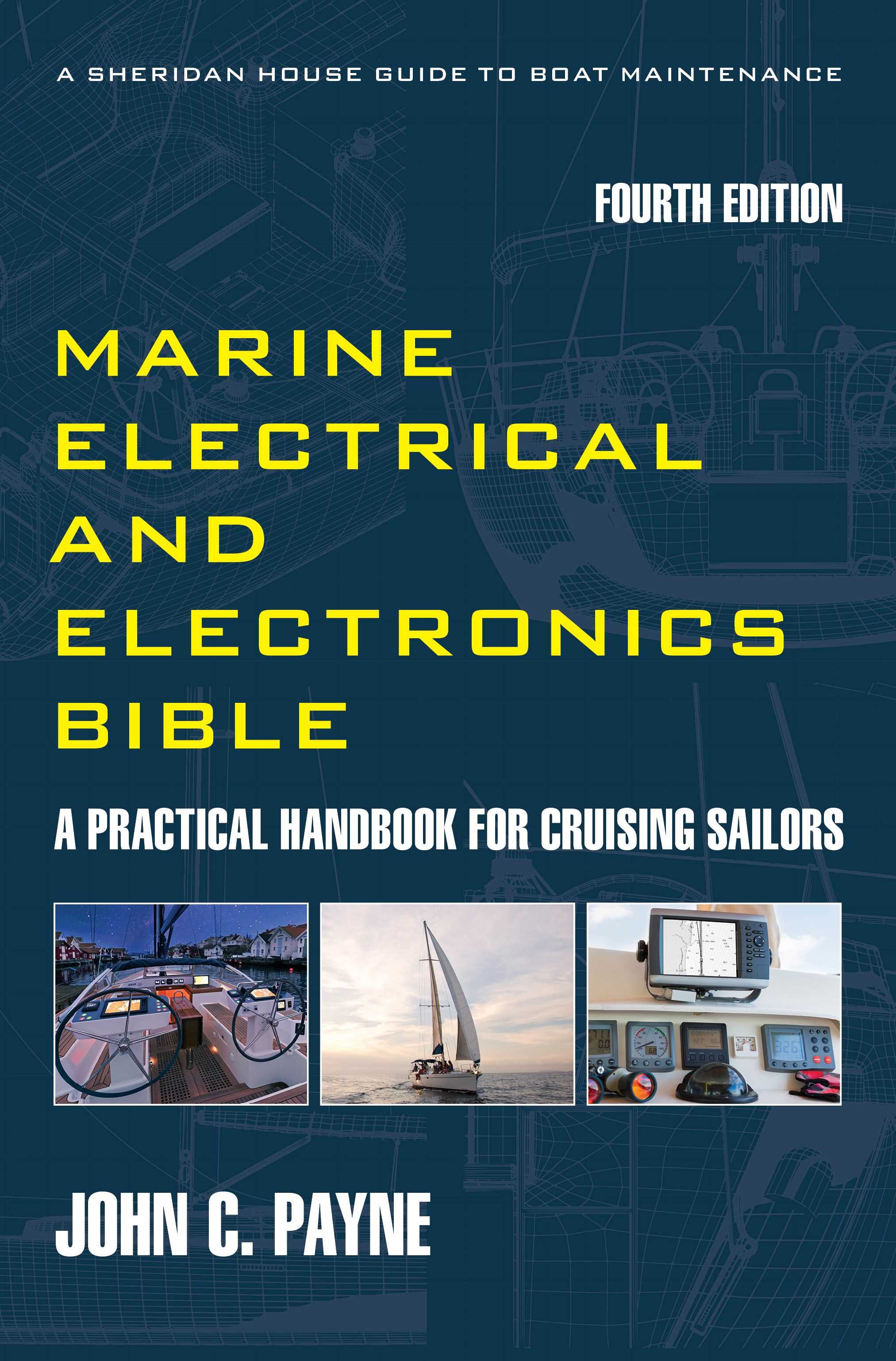Practical Boat and Marine Electronics
The advances in boat and marine electronics systems over the last 25 years have been nothing short of spectacular with the world of marine communications and navigation now destined to a total reliance on satellites.
The NAVSTAR Global Positioning System (GPS) service is fully operational and improving all the time. The European Galileo global navigation system (GNSS) went fully operational in 2016 and is more accurate than GPS. Advances in electronics and software and mass production have seen prices plummet to consumer electronics items. The boat GPS has been a game changer. The boat autopilot has become smarter than ever. Instrumentation has been transformed as processing power and software advances have increased reliability and accuracy. The boat speed log and the boat wind instruments have become integrated into multi function boat instruments systems. Even the entertainment has changed with the boat stereo undergoing a transformation.
The weather forecasts are available through NAVTEX in many areas. INMARSAT has most commercial and large pleasure vessels equipped with satellite communications, IRIDIUM and other systems offer satellite communications options. The advances in smart phone technology and a multitude of phone apps means anyone within range of a cell tower can get marine and boat information, and as 4G transitions to 5G the speed of communications will only improve.
The Marine Electrical Electronics Bible is now out, buy and save money, make your boat more reliable and be self sufficient.What is the Marine Electrical and Electronics Bible?
Some of what is in the 4th Edition of the Marine Electrical and Electronics Bible
24. Marine Electronics. Technology Advances. Artificial Intelligence (AI). The Internet of Things (IoT). Maritime Autonomous Ships.
25. Marine Electronics Installation. Navigation Station Design. Marine Electronics Installation. Marine Electronics Ergonomics.
26. Electronic Charting. Electronic Charting Basics. Chart Plotter Features. Chart Cartography Systems.
27. GPS Systems. Basic GPS Principles. GPS Operation. GPS
Accuracy. GPS Error Sources. About GDGPS. About SBAS.
Wide Area Augmentation System (WAAS). Galileo EGNOS System. GLONASS Positioning
System. Space Weather and GPS Effects. GPS Installation and Troubleshooting.
28. AIS. AIS Functions. AIS Principles. AIS Advantages and Limitations. AIS Installation and Operation. AIS troubleshooting. VDES System. AIS SART.
29. Instrument Systems. Systems Architecture. Device Interfacing. NMEA 2000. NMEA OneNet Ethernet Standard. NMEA 0183. Instrument Selection Criteria. Electronic and Solid-State Compasses. Sensor Location. Compass Compensation. Speed Logs. Paddle Wheel Logs. Smart Transducers. Ultrasonic Logs. Electromagnetic Logs. Dual Transducer Systems. Doppler Logs. Log Installation. Speed Log Calibration. Log Transducer Maintenance. Speed Log Troubleshooting. Wind Instruments. Wireless Wind Systems. Ultrasonic Wind Instruments. Masthead Unit Installation. Rig Tension Monitoring. Wind Transducer Troubleshooting. Depth-Sounders. Basic Sonar Theory. Depth-Sounder Maintenance. Depth-Sounder Installation. Depth Sounder Troubleshooting.
30. Electronics Interference. Interference Principles. EMI Basics. RFI Basics. Transients and Voltage Spikes. Lightning Transients. Surge or Electromagnetic Pulse. Arcing Noise. Induced or Inductive Coupling Interference. Capacitive Coupling Interference. Turn-On and Turn-Off Spikes. Ripple Noise. Static Charges. AC Transients. Harmonics. Voltage Dips or Sags. Voltage Swells. Suppression Methods. Practical Suppression Methods. Screening. Noise Troubleshooting. Cable Installation Planning.
31. Autopilots. Autopilot Basics. Hydraulic Steering Systems. Hydraulic Reversing Pumps. Hydraulic Constant-Running Pumps. Hydraulic Oil. Hydraulic Installation. Hydraulic Pump Maintenance and Testing. Hydraulic System Troubleshooting. Autopilot Installation. Input Sensors and Devices. Input Device Installation. Autopilot Controls and Alarms. Autopilot Maintenance. Autopilot Troubleshooting.
32. Global Maritime Distress and Safety System (GMDSS). GMDSS Radio Distress Communications Frequencies. Digital Selective Calling (DSC). GMDSS Distress Call (Alert) Sequence. GMDSS False Alerts and System Coverage. GMDSS and Yachts. EPIRBS. COSPAS/SARSAT System. Satellite (L-Band) EPIRBSs. 406MHz EPIRBs. 406MHz EPIRB Registration. EPIRB Activation Sequence. EPIRB Operation. Rescue Reaction Times. Personal Locator Beacons (PLBs). Radar Search and Rescue Transponders (SARTs). AIS SARTs.
33. NAVTEX AND WEATHERFAX. NAVTEX Basics. NAVTEX Broadcasts. US NAVTEX. NAVTEX Western Atlantic (NAVAREA 4). NAVTEX UK and Europe. NAVTEX UK Inshore Waters Forecast. NAVTEX Mediterranean. NAVTEX Installation. Weatherfax. Weatherfax Receivers. GRIB Broadcasts. Meteorological Forecast Models. Weather Facsimile Frequencies.
Boat and Marine Electronics
Boat and marine electronics seems to be an ever expanding field. Boat instrumentation including boat radar, fishfinders and boat chartplotters are now running on networks, and NMEA2000 is a game changer. Now fiber-optics are used, as well as big leaps in computing power enable the operation of split screen radar and chart plotters on multi-function touch screen displays.
All of these new boat and marine electronics systems and useful information to using them are explained in this website along with my books for sailing and motor boats. Looking for my book and equipment?
Modern marine and boat electronics are now relatively cheap and reliable. The one inherent danger of course is that many boaters are sailing away without the basic knowledge to maintain the boat electronics equipment, understand how to use boat electronics correctly, and worse still without the skills to cope when the boat electronics systems do fail. Want some answers to problems, then check out the marine electronics forum and get some good information.
More About Boat Electronics
Boat electronics instrumentation including radar, fishfinders and plotters are now running on networks, and fiber-optics are used, as well as leaps in computing power enable the operation of split screen radar and chart plotters on multi-function touch screen displays.
All of these new systems and useful information to using them are explained in this website along with my books for sailing and motor boats. Looking for my book and equipment?
Modern marine and boat electronics are now very cheap and reliable. The one inherent danger of course is that many boaters are sailing away without the basic knowledge to maintain the equipment, understand how to use it properly, and worse still without the skills to cope when the systems do fail. Boat electronics need not be mystifying.
